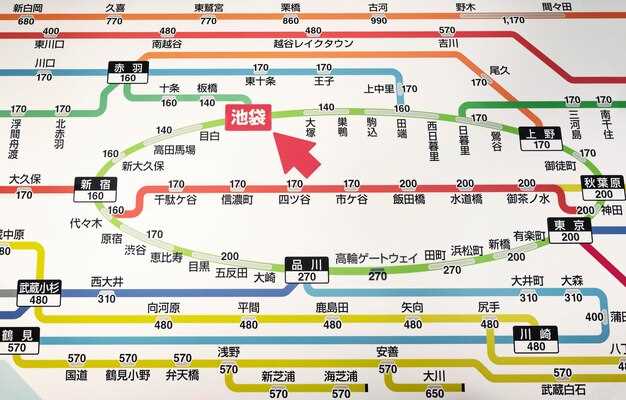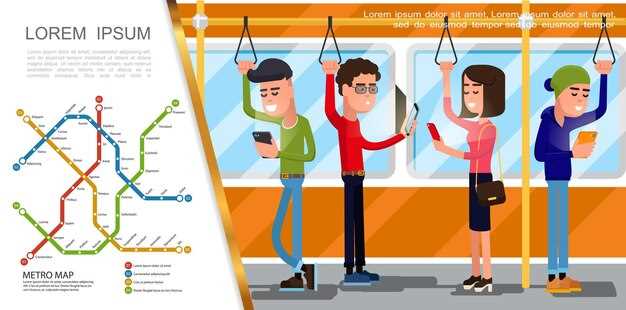Recommendation: Plan for two transfers at minimum when traveling across the capital’s rail network, especially during peak days. If you can, start earlier or later in the day to avoid crowds; a green pace and a steady mode of travel keeps time on board shorter and cost more predictable.
New corridors have reshaped the core network, with marked improvements through the area around dongdan and baishiqiao, extending to other nearby districts. These sections feature clearer sign panels and better roads connections, shortening time between stops for passengers.
During summer days, congestion concentrates near the busiest hubs; although crowds stay high during peak periods, detouring through adjacent corridors located in the core area can cut time by several minutes. within these paths, passengers gain from reduced walking and tighter time windows, even as the number of transfers remains manageable.
Practical tips: For days with high footfall, prefer off-peak time windows and avoid the central choke points near the dongdan interchange; use baishiqiao as a backup staging area if available. This approach reduces cost and peak pressure while keeping walking to a minimum and staying within safe roads network.
In practice: With the new alignment, passengers experience shorter dwell times; interchange points near dongdan and baishiqiao serve as reliable anchors. within the area, headways at core segments stay around 2–3 minutes during peak and under 5 minutes off-peak, helping to keep cost manageable for daily commuters and much lower during off-peak windows.
Beijing Subway Map 2025: Practical overview of updated lines, routes, and travel tips

Travel during off-peak hours to dodge the rush; use a stored-value card or mobile pass, and plan a pick-up at the closest marked interchange to shorten walks. tips for international passengers: set language preferences in the official app before departure.
A tongzhou-centered corridor added to the network delivers a smoother road toward the core, with a smoother interchange at chaoyangmen and near the 军事博物馆 precinct. The dongdan node now ties into the palace district, providing a larger, easier path for travellers. The updated layout reduces trip times for domestic and international passengers on inbound and outbound legs.
Prices are posted at marked entrances and vary by distance; during peak windows, some sections have longer waits and longer walks inside stations. sleepers crowd major hubs, so move to the first or last car and head for the door closest to your exit to speed the trip. Payment methods include card, app, or kiosks, which support domestic and international passengers alike.
Inside stations, soft lighting and clear signs aid orientation. Private help desks assist visitors with directions in several languages, and staff can guide you to the chaoyangmen area or the 军事博物馆 zone. Bring a copy of your plan and use the marked exits to reach the road-side entrances quickly.
For a practical trip to the Military Museum or the palace district, start at dongdan and switch to tongzhou corridor for a quicker transfer; this creates a closer trip and reduces the need to backtrack. The sometimes-challenging signs are mostly bilingual; pay attention to the times and the last trains to avoid overnight waits.
In sum, the updated network favors smooth progress for both domestic and international passengers, with larger interchanges, more direct connections, and flexible payment methods. Carry compact baggage, check prices in advance, and plan around peak windows to minimize crowd exposure and ensure a calmer trip.
New Lines and Extensions for 2025: What to know and how they affect your routes
Start at the dongdan interchange to cut kilometers and time: the southern extension takes you closer to chaoyangmen and xierqi with one fewer transfer. This service offers a faster itinerary for daily trips, and it takes less waiting when trains run on the new corridor.
The following expansion adds a ring-like link that covers the core area and connects feeder lines to the north and south. This transport upgrade brings trains more frequently, generally reducing wait times. You can reach major exhibition venues with fewer changes, and the route is located near key business districts. Within the area, either you stay on the same vehicle or transfer once, depending on where you want to go. This extension is covering new neighborhoods such as the xierqi and dongdan corridors, making travel across town easier for locals and visitors alike.
Prices for single rides align with the existing tariff; tickets can be bought through the official app or at kiosks, with through-pass options for travelers who want to cover multiple stops in a day. If you plan a visit to the exhibition area, a day-ticket may be worth it, and you can stay within a single ring while enjoying the convenience. Language on signs and announcements ensures you know where to go, so you can enjoy the new sections without delays; for longer itineraries, use the suggested connections to reach your destination closer and faster.
Key Interchange Hubs and Smooth Transfers
Start at Xizhimen to minimize backtracking and ensure smooth transfers; this area offers cross-branch connections with a short walk between platforms and a predictable rate of trains every 4–7 minutes. In november, crowds are lighter than peak hours, making the overall itinerary easier to manage and reducing the need to rush between options.
From there, ciqikou presents a second efficient option for connecting toward southwestern districts, with a useful transfer rhythm that generally keeps wait times reasonable. Puhuangyu provides a direct link to the airport area, so if your plan includes catching a flight, this hub could save taking longer detours and might shorten the route compared with a longer, roads-based option.
Transfer times and wayfinding: generally 5–9 minutes for a clean handover between platforms, with walking distances of roughly 150–350 meters inside the interchange area. Signs are clear, although crowded periods can slow you; if you’re carrying luggage, use escalators where possible to avoid long climbs and delays.
Practical tips: download the official schedule before you travel; some services offer private pick-up options outside terminals and offices, which could be convenient for late-night movements. Prices remain affordable compared with taxi fares, and a reasonable transfer plan reduces total travel time; in china, this approach often beats relying solely on buses, although buses can fill gaps when you want to explore offbeat areas.
Forbidding zones exist inside some terminals, so stay to the public areas and obey posted notices; you’ll find offices that can help with maps and nobody should require you to take unnecessary detours. If you want soft guidance on routes, ask station staff or drivers for the most direct path to your target, which can save you waiting and keep your mode of travel efficient while you focus on your itinerary and which sights to visit.
Expansion continues to add options, so if you’re planning an area-wide exploration, consider combining two hubs (for example, Xizhimen and puhuangyu or ciqikou) to optimize time. This approach might save much time on busy days, especially if you want to minimize walking and maximize time at places you want to explore. Always check the latest updates and keep an eye on any changes to services and pickup points; staying flexible helps you get the most out of your trip.
Official source: bjsubway.com
Fare Structure, IC Cards, and How to Pay
Recommendation: get an IC card and load it before your first ride to save cost and speed entry; you want a soft, reliable option that works into both daily commutes and longer city trips.
Fare basics: The initial fare covers up to 6 km (about 3.7 miles) and starts at 3 yuan; fares rise with distance, increasing successively by roughly 1 yuan for each additional 5 km; most single journeys stay under 14 yuan. For four stops or more, plan routes that stay within affordable ranges; however, the system remains extremely predictable for typical trips, including those that connect to flights and other modes.
IC cards: Obtain at offices or staffed counters; a refundable 20 yuan deposit is required and returned when you surrender the card. Load at machines at stations, via partner kiosks, or through the official website; top-ups can also be done through chinese apps. The card works on both trains and buses, which makes it the preferred option for those who want convenience and enjoy smooth transfers.
Payment options: For single journeys, tickets can be bought at machines that accept cash or card; for best value, choose the IC card, which offers a small discount and a daily cap. Mobile wallets such as WeChat Pay and Alipay are widely accepted at gates and in offices. If you are traveling from puhuangyu to datunlu or to the museum district, you can ask staff which option is fastest or check the website for the latest tips.
Where to buy and top up: The November update on the official website provides current fare levels and processing details. You can also visit offices near major transit hubs to pick up a card or add funds; top-ups are processed quickly and show immediately on your balance. The system mainly serves the urban core but also connects to east districts and other neighborhoods; some routes start in the east and head toward museum areas so you can plan a stable route and still keep costs in check, which helps if you want to enjoy a long day without overspending.
- Base fare: 3 yuan for up to 6 km (~3.7 miles); add 1 yuan per extra 5 km; typical trips stay affordable.
- IC card: 20 yuan deposit, refundable; reload at stations, offices, or the official website; discounts apply on each ride.
- Payment methods: IC card preferred; cash/card at machines; chinese apps for quick top-ups; for example, puhuangyu and datunlu stops have staffed offices for assistance.
- Updates: check november releases on the official website for latest figures and policy changes.
Peak Hours Navigation: Best Times to Travel and Shortest Routes
Prefer daily trips after 10:00 and before 16:00 on workdays; choose a route with a single transfer or direct to reduce time and keep comfortable during the office-area commute.
During xierqi, head to smaller marked stations when possible and plan one transfer to reach the museum district efficiently, noting that several new hubs opened nearby to ease access and shorten walks.
To find the first sustainable option, prioritize first legs that cover longer segments with minimal transfers; larger interchange stations usually offer quicker connections thanks to faster trains, clear signage, and accessible connections.
Check the official website for online status, specific time windows, and links that compare two or three options; the daily updates and highlights near stations help you make a good choice and avoid delays.
For last-mile needs around popular areas, consider taxis or short tours; bring a power bank and a compact guide, and plan to reach a chosen highlight like a museum or office area.
Live Updates and Navigation Tools: Maps, Apps, and Real-time Info

This private data feed approach would deliver real-time arrival updates for high-traffic corridors, including xuanwumen and guloudajie, enabling transport planning with much less guesswork during their peak hours, and an arrival estimate at each stop.
Real-time information surfaces wait times and transfer options, refreshed every 30-60 seconds; users will understand that delays can occur during maintenance or crowding, and huoying data can supplement local updates.
From november onward, service revisions around the palace district and xierqi influence common corridors; buying tickets in advance speeds entry and reduces wait at the front.
Apps and private dashboards bring sicas daily feeds to your palm, with options to customize alerts, offline lookups, and road status; some users prefer the second device for redundancy.
Daily planning tips: carry yuan for on-site purchases, for their first trip start from xuanwumen or guloudajie; november travel can be busy; some travelers plan a short tour around the palace; anticipate an early arrival will bring smoother connections, and private options let you adapt on the fly.











